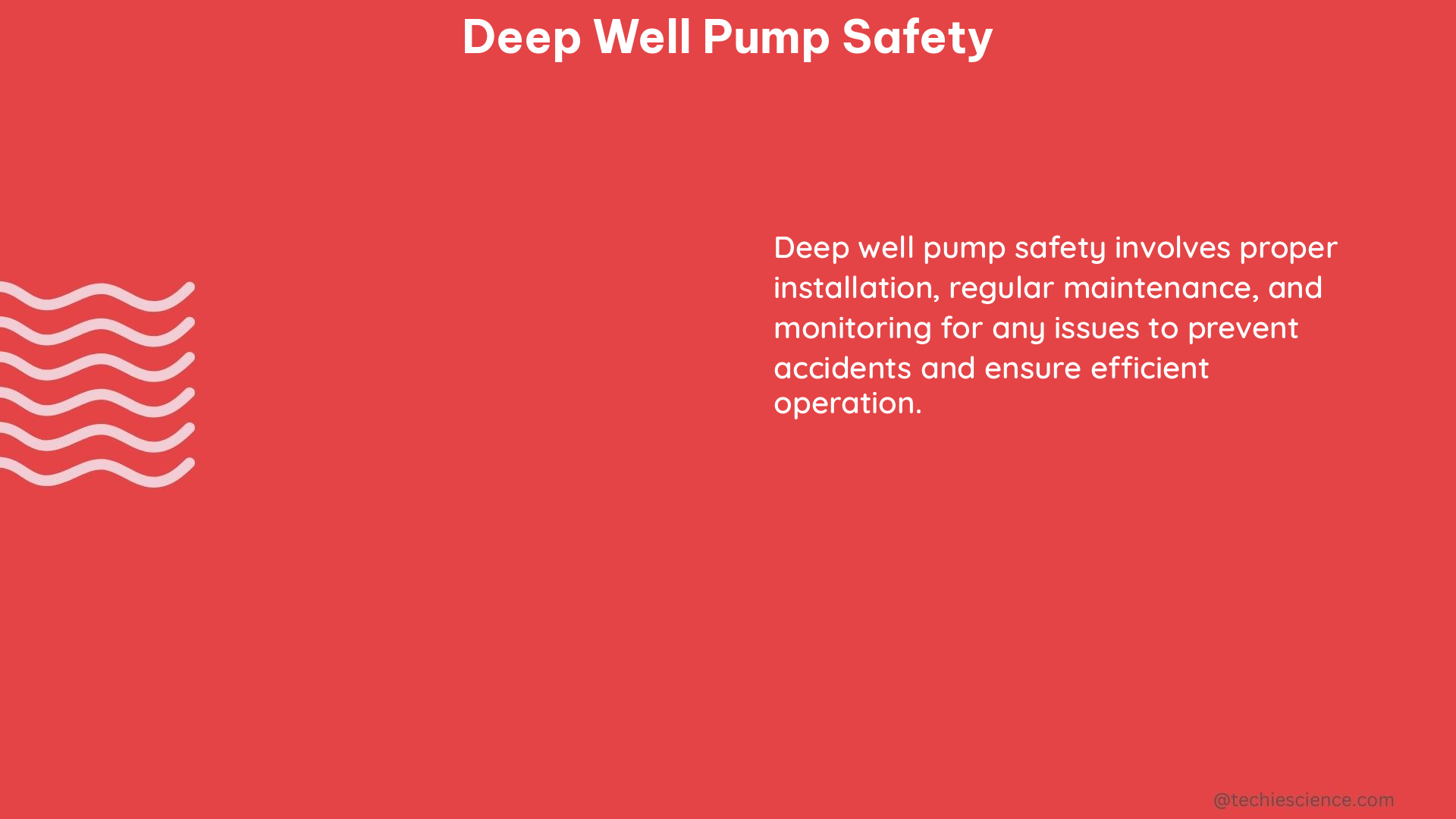Deep well pumps are essential for providing reliable water supply, but their safe operation and maintenance are crucial to prevent potential hazards. This comprehensive guide delves into the technical details and quantifiable data points that are essential for ensuring the safe operation of deep well pumps.
Pump Type Selection
The selection of the appropriate deep well submersible pump is the foundation of safe operation. The pump type should be chosen based on the diameter and depth of the well. For instance, if the bore diameter is 200mm, only 8JD or SD8 deep well pumps can be used to maintain adequate clearance between the well and the pump. This clearance is crucial to prevent the pump from getting stuck or causing damage to the well casing.
Water Level Monitoring

Monitoring the water level in the well is a critical aspect of deep well pump safety. The water level drop should be calculated based on the selected pump model and its rated flow (Qe). The maximum flow rate should be used to determine the water level drop, as this represents the scenario with the highest water demand. The depth of the moving water level (Hd) is calculated by adding the static water level (Hi) to the water level drop (SM).
Pipe Length and Total Loss Head
The total length of the deep well submersible pump pipe (L) should not exceed the maximum length specified by the manufacturer. Exceeding this limit can lead to increased friction losses and reduced pump performance, potentially causing damage to the system.
The total loss head (Hz) is calculated based on the water pipe diameter and flow rate. For example, the friction loss per 10m of water pipe is H, and the total loss of the water pipe is Hz=0.1hL. Accurately calculating the total loss head is crucial for determining the required lift (Hx), which is the sum of the depth of the moving water level (Hd) and the total loss head (Hz).
Impeller and Pump Head Series
The pump impeller series should be selected based on the required lift (Hx) to ensure that the water pump’s rated lift is not less than Hx. This ensures that the pump can deliver the necessary pressure and flow to meet the system’s demands without exceeding its design limits.
Pressure Tank Capacity
The pressure tank capacity should be calculated based on the gallons per minute (gpm) rating of the pump and the draw-down reservoir required for the pump to run for at least 1 minute if it is under 1hp and 2 minutes if it is over 1hp. This ensures that the pressure tank can provide the necessary buffer to prevent short-cycling of the pump, which can lead to premature wear and tear.
Maintenance and Inspection
Regular inspections and maintenance are essential for ensuring the safe and efficient operation of deep well pumps. This includes:
- Sanitizing the well to prevent the buildup of contaminants and ensure water quality.
- Checking the pressure tank for proper operation and ensuring that the pre-charge pressure is within the recommended range.
- Inspecting the pump and associated components for any signs of wear or damage, and replacing them as necessary.
- Monitoring the pump’s performance, such as flow rate, pressure, and power consumption, to detect any changes that may indicate a problem.
By following these guidelines and maintaining a proactive approach to deep well pump safety, operators can ensure the reliable and safe operation of their water supply systems.
Conclusion
Deep well pump safety is a critical aspect of water supply management. By understanding the technical details and quantifiable data points related to pump selection, water level monitoring, pipe length, total loss head, impeller and pump head series, and pressure tank capacity, operators can ensure the safe and efficient operation of their deep well pumps. Regular inspections and maintenance are also essential for preventing potential safety hazards and ensuring the long-term reliability of the water supply system.
References:
- What Data Should be Calculated When a Deep Well Pump is Used?
- Diagnose and Replace a Submersible Well Pump
- Submersible Pump Selection for Deep Wells: A Case Study
- Submersible Pump Sizing and Selection
- Deep Well Pump Maintenance and Troubleshooting

The lambdageeks.com Core SME Team is a group of experienced subject matter experts from diverse scientific and technical fields including Physics, Chemistry, Technology,Electronics & Electrical Engineering, Automotive, Mechanical Engineering. Our team collaborates to create high-quality, well-researched articles on a wide range of science and technology topics for the lambdageeks.com website.
All Our Senior SME are having more than 7 Years of experience in the respective fields . They are either Working Industry Professionals or assocaited With different Universities. Refer Our Authors Page to get to know About our Core SMEs.